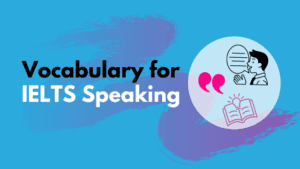👇 Take this lesson with you! 👇
Table of Contents
Introduction
Have you ever been told, “Just practice more” when you asked how to speak English fluently? While the advice is well-intentioned, it’s not particularly helpful without a clear method to practice speaking English.
Many students, especially those preparing for English tests such as IELTS Speaking, face challenges in finding speaking partners and knowing how best to practice speaking English alone. If this is you, relax, I’ve got your covered.
In this blog post, I’ll explore a well-researched 3-step method to practice speaking English. This method is not a new invention; it’s a time-tested technique in the realm of language teaching. However, I aim to present it in an easy-to-understand manner, ensuring you can start practicing and improving your English speaking skills immediately.
The 3-Step method explained
This method of practicing new language is used by many English teachers all over the world, but most students may not be aware of it and why it works.
The 3 steps are as follows, I am using my own names for some steps;
- Tight Practice (controlled)
- Loose Practice (semi-controlled)
- Free Practice (free)
The idea is that when learning new vocabulary or grammar, it is easier to start practicing with simple words or phrases, and then build up the context and complexity gradually.
1. Tight practice
Whether you’re practicing alone or with a partner, the goal of tight practice is repetition of phrases and short sentences. By repeating target words or grammar structures in various ways, you can improve your English fluency and build your confidence.
Example with New Vocabulary: Clothes
New Words: Tie, short-sleeved shirt, trousers.
For beginners, just focus on repeating a new word with collocations and building small phrases.
- A tie
- Wear a tie
- I am wearing a tie
- I like wearing a tie
- I don’t like wearing a tie
For more advanced learners, make a sentence then try the following
Add a word or two (e.g. adjectives to adverbs)
- I don’t like wearing a tie
- I don’t like wearing a pink tie
- I usually don’t like wearing a pink tie
- I usually don’t like wearing a pink tie for work
Change a word or two
- I don’t like wearing ties
- I don’t like buying ties
- My brother doesn’t like buying ties
Change the tense
- My brother doesn’t like buying ties
- My brother didn’t like buying ties
- My brother has never liked buying ties
We can also use this approach to practice new grammar.
Grammar Focus: Present Perfect
- I have never worn a pink tie
- I have never worn pink trousers
- I have never worn pink shoes
Key Takeaway: The essence of tight practice is to add or change words in short sentences.

2. Loose practice
Loose practice is about context. Unlike tight practice, which focuses on individual sentences, loose practice involves using new vocabulary or grammar in larger language chunks, like stories or conversations. This kind of practice is great for improving your English speaking fluency, and it can be fun which can also be motivating, especially if you are preparing for IELTS Speaking.
Example with the Topic: Clothes
New words: Tie, short-sleeved shirt, trousers, to sport
Individual Practice:
- Craft a short story using the words.
- Record a 30-second audio or video diary using the words
‘Today I went to work and I saw my friend. He was wearing a new tie that he bought at the weekend. He told me we went shopping and he also bought a matching short-sleeved short with some lovely new trousers, and he wants to sport the tie for his birthday party next Saturday.’
With a Partner:
- Engage in a conversation and try to use the new words.
- Fun tip: Keep your word list secret and try to guess each other’s new words!
Key Takeaway: The essence of loose practice is to practice in context.
3. Free practice
Free practice is all about spontaneity. There’s no specific word list to follow, but you’ll focus on a chosen topic, like “clothes.” This step is crucial as it allows you to recall and review previously learned language and emphasises genuine communication.
Practice Ideas:
- Start a conversation with someone on the topic
- Ask a partner series of questions on the topic
- Make and share stories related to the topic
- Record an audio or video diary
If you’re unsure about your output, you can always check with tools like ChatGPT for basic feedback.
Key Takeaway: The essence of free practice is to move the focus away from practicing words, to practicing communication.
Conclusion
Whether you are learning English for fun or preparing for an exam like IELTS Speaking, this 3-step method to practice speaking English can help improve your English speaking fluency.
While it’s beneficial to follow these steps in order, it’s not mandatory. The key is to incorporate a mix of these activities into your English speaking practice routine.
Do this regularly, and you’ll be on your way to becoming a more confident English speaker. Remember, language learning is a journey, and with a good method to practice speaking English, you can make significant progress. Happy practicing!
References:
Skinner, B.F. (1957). Verbal Behavior. New York: Appleton-Century-Crofts.
Vygotsky, L.S. (1978). Mind in society: The development of higher psychological processes. Harvard University Press





